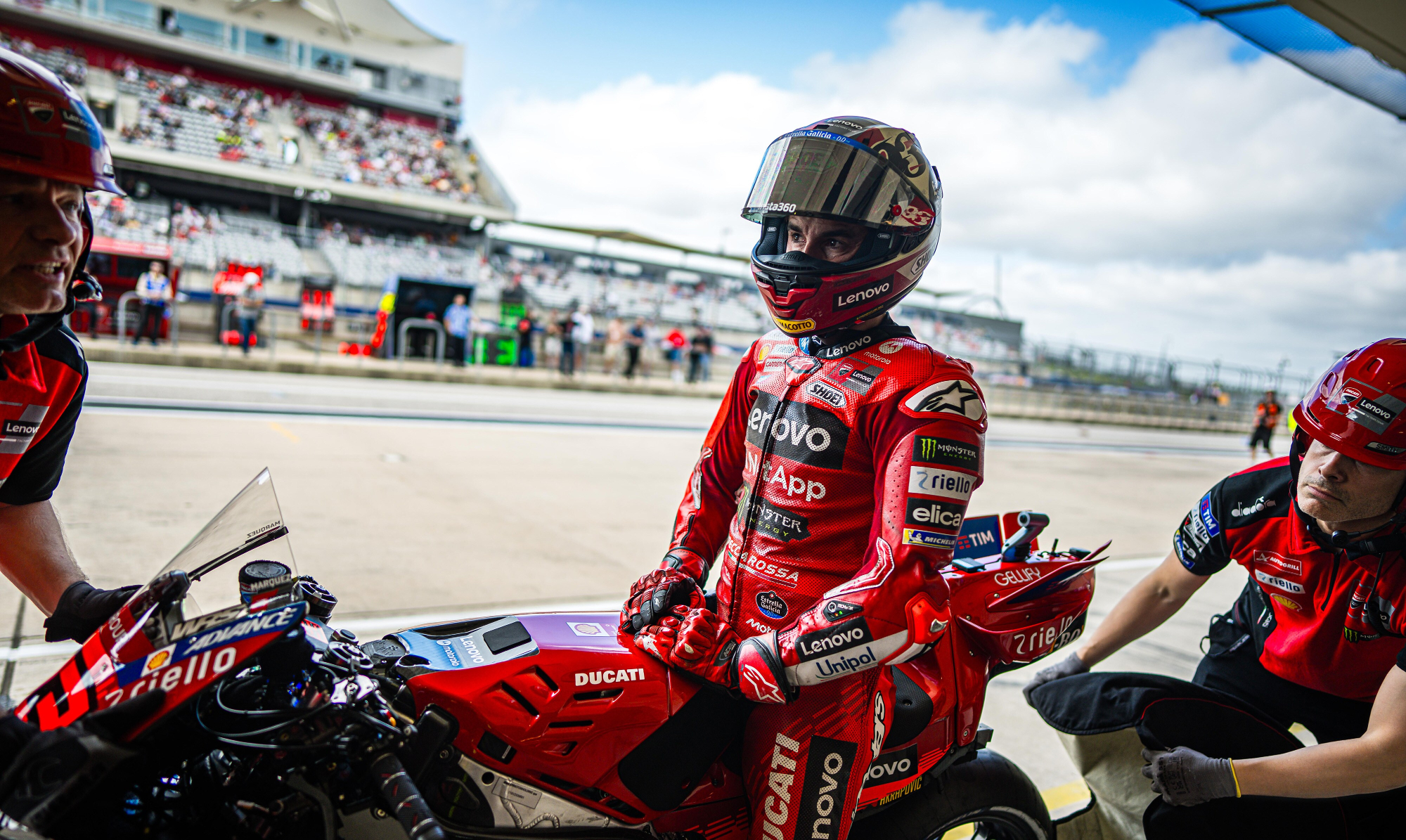I like MotoGP. (I equally enjoy World Superbike and MotoAmerica racing.) If you’re reading this, you probably like MotoGP, too. Since we think it’s fun, exciting, compelling entertainment, we naturally expect others will enjoy it, as well, but here in the United States, the one race a year draws some of the smallest crowds all season and the broadcasts don’t even rise to the level of sideshows. Many are convinced that if Liberty Media gains majority control of MotoGP, it will significantly raise the profile of the world’s premier motorcycle racing series in the world’s richest media market, as it did with Formula One racing.
I disagree.
It’s easy to think that since we love the racing, all it takes to make it surge in popularity is spending some money on promotion to get the attention of larger audiences and naturally they’ll fall in love with the sport, like us. I say it will never happen, simply because the United States is not a motorcycling culture and no amount of promotional spending can make motorcycle racing a mainstream sport.

Sparsely populated grandstands are the norm at U.S. rounds of MotoGP, compared to the full houses seen at tracks in other countries. Ducati photo.
The proposed acquisition, the simple realities
In case you’re not up to speed, here’s the current situation: Liberty Media, which controls F1 and has successfully grown the audience for that sport in the United States, last year made a bid of about $3.8 billion to buy 86% of MotoGP. That deal is currently being reviewed in the European Union and elsewhere to see if it violates antitrust regulations. Recent news reports say the deal will be approved by EU regulators.
So why do I think that Liberty Media can’t do for MotoGP in the United States what it did for F1? As I said above, it all comes down to the fact that this is not a motorcycling culture.
In the United States, everyone has been in a car. Most people drive cars. And while driving to work in your Honda Civic has about as much to do with piloting an F1 car as filling your bath tub has to do with operating the locks at the Panama Canal, it still means that cars are seen as “normal.” F1 is seen as a sport for the wealthy. It’s seen as prestigious or glamorous.
Motorcycle racing? It isn’t seen at all. Motorcycling? Most simply don’t understand it. The Motorcycle Industry Council estimates that 8% of U.S. households own a motorcycle. If we take that statistic at face value (and the MIC has a history of providing survey results that always make the industry appear to be in a golden era of plenty), that still means more than 90% of the population has no direct exposure to motorcycles.
But really, it’s worse than that. Most of those motorcycles are hardly ridden. Motorcycles account for less than 1% of U.S. traffic. Compare that to rush hour in Jakarta or Hanoi. Or even to places like Spain or Italy, where even your abuela or nonna has at least ridden a scooter.
The simple fact is that motorcycles are totally foreign to most people in this country in a way that cars aren’t. Motorcycles are widely seen as unsafe. Uncomfortable. Why would you want to get rained on? Wouldn’t you rather have a luxury performance car, like something an F1 driver or team boss would drive away from the track? Those 90% aspire to something like that, not the thrill of riding a motorcycle.
Virtually every spectator at a U.S. professional motorcycle race either rides a motorcycle or is there because of a family member or friend who does. Through that connection, they have some understanding and appreciation for the skill they see on the track. More importantly, motorcycles are not foreign to them.
Now I can hear your counter-argument, that you don’t have to have played a sport to enjoy it as a spectator, and I’ll even help you a little. A woman who is a good friend of mine is an avid and knowledgeable NFL fan and my sister really enjoys watching college football. Obviously, neither ever played football. The difference is they grew up surrounded by those sports. Those sports are not foreign to them. On the contrary, my sister has fond childhood memories of watching football with our sports-fan father. My sister occasionally rides her scooter to work (so she’s part of that 8% the MIC touts) but motorcycle racing is still foreign to her. It’s not mainstream, like football.
No amount of promotional spending by Liberty Media can overcome the lack of connection to motorcycling that 90% of the population has. Maybe that would be possible if we were in a society where people were searching for scarce entertainment options, but reality is the opposite. There are too many options vying for people’s attention, money, screen time, and affinity.
Now you might also say, sure, Lance, 90% won’t be fans of MotoGP but even getting a small slice of the U.S. population interested in MotoGP would be a huge increase in the fan base. That’s true, but there are even more obstacles. Even among the 3% or so of the U.S. population that really has a connection to motorcycling, some are not just uninterested in racing, but in some cases antagonistic toward it. I’ve met plenty of middle-aged cruiser riders who don’t want anything to do with roadracing. Not their bikes, not their people. We’ve seen it in the failure of past attempts to draw cruiser riders to the races with special classes, from 883 Sportster racing to the XR1200 class. King of the Baggers has bucked that trend of failures, largely (I believe) because it tapped into and capitalized on the grassroots trend of performance baggers rather than trying to create a trend and sell it to disinterested cruiser riders. Still, while KotB has clearly drawn new fans to MotoAmerica races, I haven’t seen much evidence that they’ve been converted to fans of Superbike racing. And I doubt they’ll become MotoGP fans.
A separate question — and one I won’t get into now — is whether we should even want MotoGP to grow that much. I want the sport to be healthy, and I wish it were easier to watch the races because they weren’t shoved so far into the extreme fringes of televised sports, but I don’t want F1 levels for ticket prices or F1 levels of celebrities clogging the pre-race grid for photo ops.
In the end, it doesn’t matter what you or I want. The realities are what they are. I’m sure Liberty Media can take some steps to strengthen the MotoGP audience in the United States. But bringing it up to F1 levels? Not a chance.
